For the Brandolini dynasty, beauty begins with their nonna
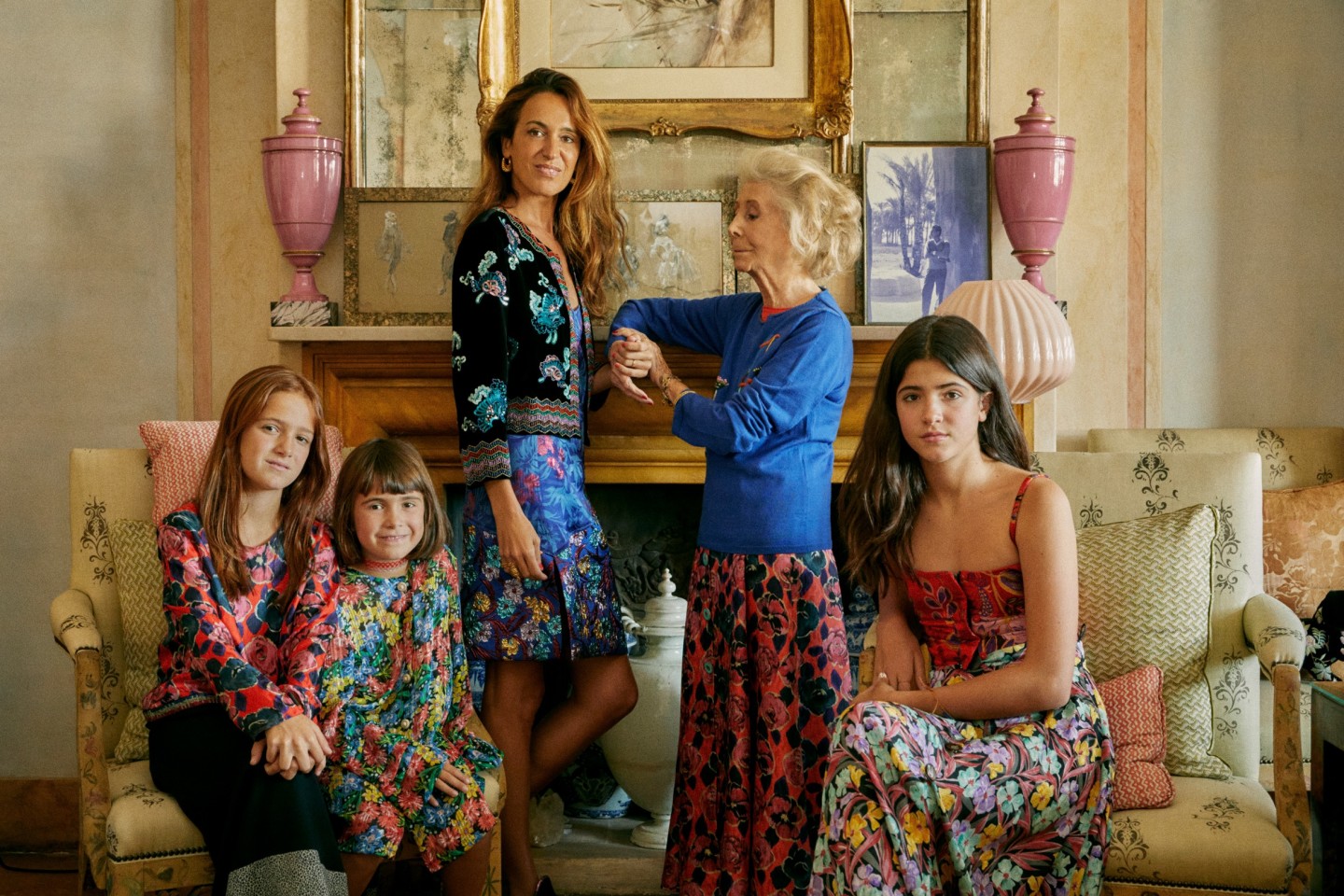
Simply sign up to the Fashion myFT Digest -- delivered directly to your inbox.
A winter afternoon in Venice, and the cut-glass light has washed the sky completely of its habitual sfumatura. It pours in through the tall windows of the Palazzo Giustinian Brandolini on the Grand Canal, illuminating the exotic papiers peints scenes that cover the dining-room walls. In the courtyard below, the palazzo’s garden is deep in hibernation, all leafless grey ivy vines and fallow flowerbeds: but here, banana palms sprout next to rivers and huge ficus trees spread shade over golden temples, every scene neatly framed by faux columns and cornices of rich malachite green.
Colour and extravagance are Venice’s default settings, in the basilicas and piazzas as inside this house, whose inhabitants comprise various branches of one sprawling family. Its matriarch, nonagenarian Countess Cristiana Brandolini d’Adda, isn’t technically Venetian – she was born Cristiana Agnelli in Turin, a sister of “L’Avvocato” Gianni, long-time scion of the founding family of Fiat Industrial SpA – but her home emanates a sense of her formidable character, with Cecil Beaton portraits and Capote Black and White Ball snapshots attesting to her social power.


In the apartment above her lives Brandino, one of her four sons, whose late wife Marie founded the Venetian glassware brand LagunaB (it’s now overseen by his son, 32-year-old Marcantonio, who comes by to have lunch with his grandmother every week or so). Downstairs on the piano nobile is the apartment of Diane von Furstenberg – the former wife of Cristiana’s nephew, Prince Egon von Fürstenberg, which makes her family, too.
Today the palazzo’s top floors are filled with the clamour of the fourth generation; Cristiana’s granddaughter Coco is here, with her three daughters in tow – Nina, 13, Lea, 10, and Cora, six. Like her grandmother, Coco is and isn’t Venetian: born and raised in Paris, she studied philosophy and political science there and design at Central Saint Martins. She spent her early adulthood in New York and for the past 10 years has lived in Milan with her husband, Matteo Colombo.



The tie that binds her to the city is her relationship with Cristiana, one which both describe as the most profound familial bond they have. It was her grandmother who took her travelling as a child (as well as her parents), and they spent whole summers at Vistorta, the family’s agricultural estate in Pordenone, north-east of Venice. They speak several days a week. “We’re linked,” Cristiana says simply. “I watched her grow up, I saw that there was a great deal to her, which might need some encouraging to be brought out, because she was shy and a bit closed.”
It was Cristiana – inducted into the International Best Dressed Hall of Fame in 1975 – who convinced Coco to move to New York alone in her early 20s. A three-month internship at Oscar de la Renta (where she worked with Adam Lippes) became a five-year job, before she went on to work at Alberta Ferretti and Bottega Veneta (with Tomas Maier). She returned to Milan in 2012 to join the Alta Moda team at Dolce & Gabbana, where she stayed for a decade.
Years of observing and absorbing her grandmother’s taste – not just in fashion and interiors, but art, literature, travel and people – had already primed her eye; Alta Moda allowed Coco to hone it in a professional context. Her decision to launch d’AddA, her clothing and accessories line, came from a desire to merge the couture knowledge she’d acquired with a love of found things. The first d’AddA collection, released in late 2022, consisted of 75 pieces; all were made either from vintage remnants – fabrics sourced at antiques markets, tracked down by word-of-collector-mouth, or bought off colleagues – or else from reconstructed vintage clothes. A diaphanous silk skirt (from €1,400) or brocade bustier with capped sleeves (€990) might be replicated in small numbers – no more than 10 – but the detailing is original to each, making almost every piece unique. She has a tiny atelier in Milan, where she meets clients by appointment. Otherwise, the operation consists of a handful of trunk shows and a shoppable Instagram feed – no retail outlets, no e-commerce website, no wholesalers.
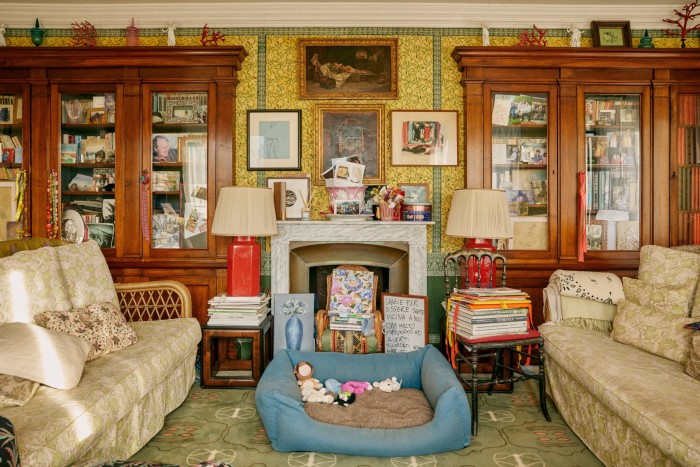

Dolce & Gabbana was the ultimate training ground. “Coco and I shared creativity, taste, emotions, vision,” says Domenico Dolce, the brand’s co-founder and designer. “We created some magnificent things for Alta Moda. I remember the first time I met her; we spoke at length about fashion, and I asked her, ‘Do you like it? Because fashion is a serious thing.’ She said yes, and I told her, ‘Then you absolutely need to work with us.’”
“Fabrics, fabrication, everything was just no limits; whatever you wanted to do you could,” Coco recalls of the experience. Launching d’AddA afterwards was “a lot about confidence. I’d always worked for big brands, was always very protected. It took me a long time to feel I could approach [designing] on my own.” She credits Dolce with fostering that confidence. “He was like a super-mentor. The structure behind the business, how to package my idea – most of that came from him.” She initially didn’t think about showing the clothes on herself on the d’AddA Instagram feed, for instance, opting for models or friends; Dolce encouraged her to focus exclusively on photos of herself and her family. “He pointed out that not many people have a story like mine – my relationship with my grandmother, who she is and her influence on me, is quite special. ‘Use that,’ he said.”



The trunk shows – so far she’s staged them in New York and Paris; London will be up this spring, she says – set a show-and-tell tone. But she also has a handful of loyal buyers overseas who’ve found her on Instagram. “They don’t care about knowing or talking to me; it’s about my product, and the fact they won’t see it on anyone else. They find it, like it, click on ‘buy’, I ship it, ciao-ciao,” she says with a laugh. “I love those women because, to me, they really credit my work.”
She shows me the buttons running up the centre of the Viola skirt (€1,850), a hothouse-flower pattern printed on heavy black silk (“A vintage print I had remade with this [fabric],” she says. “It has such a good hand, it hangs much better than the original”). “All the buttons I use are vintage. That’s a big job. Either I have to find the mercerie [haberdasheries], of which by now there are barely any left, or the private collectors. I was tipped off about this obsessive woman who lives outside of Rome by a dealer at a flea market in Tuscany, he’s been selling me enamel necklaces forever. This woman is amazing, like a button hoarder. She had boxes and boxes; there must have been tens of thousands, and she turned up some great designs” – among them the large hand-blown glass ones we’re admiring.
Such treasure hunting, and the rapports it engenders, is the great payoff for her. “These niche people, the artisans who’ve done the same thing their whole lives and carry on the traditions of handmade; working with them is deeply satisfying at the human level.” She has been surprised how that appreciation extends both ways: “It was hard to convince some factories to make, you know, 10 things when the normal order is maybe 1,000; I have one producer who, when I walk in, laughs and says, ‘Uh-oh, here we go, I can feel myself losing money already!’ But many have known me for years, and they don’t care only about the money.”

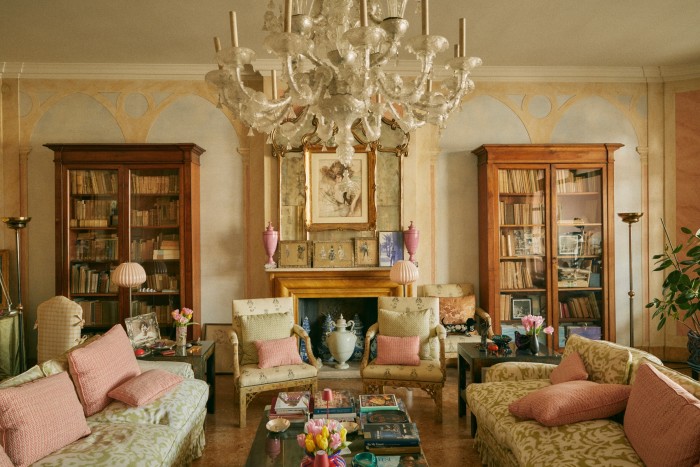
The d’AddA aesthetic is not for everyone; menswear and minimalism devotees may have already turned the page. But while Coco layers d’AddA on d’AddA on d’AddA, for a result that’s peak Venice in its extravagance (but always firmly the right side of working), it’s not difficult to imagine single pieces in a solo role against jeans and a camisole or an LBD. Maybe the cropped black-velvet jacket (POA), adorned and edged with ornate multicoloured beading, which Coco first dons herself, then helps Cristiana into; or the delicately flowered blouse (€1,250) that six-year-old Cora is pulling off brilliantly as a dress.
Then again, perhaps that’s the setting at work. When the house in which the clothes are being worn has been designed by Renzo Mongiardino, it can throw extravagance metrics off. Cristiana and her late husband Brando were among the Genoese designer’s first and most devoted clients, commissioning him to decorate their house in Vistorta and their apartment here in Palazzo Brandolini. Mongiardino’s penchant for drama – he designed sets as well as grand residences – is evident everywhere, not just in the dining room with its exotic papiers peints. The effect of stone and fabric finishes is rendered with paint across the walls of the sitting room and entrance hall. In the “cinema room” – which is a smaller salotto awash in shades of red, with a huge television facing a row of overstuffed armchairs upholstered in a persimmon-hued Bennison vine print – there are golden trompe l’oeil columns and medallions.


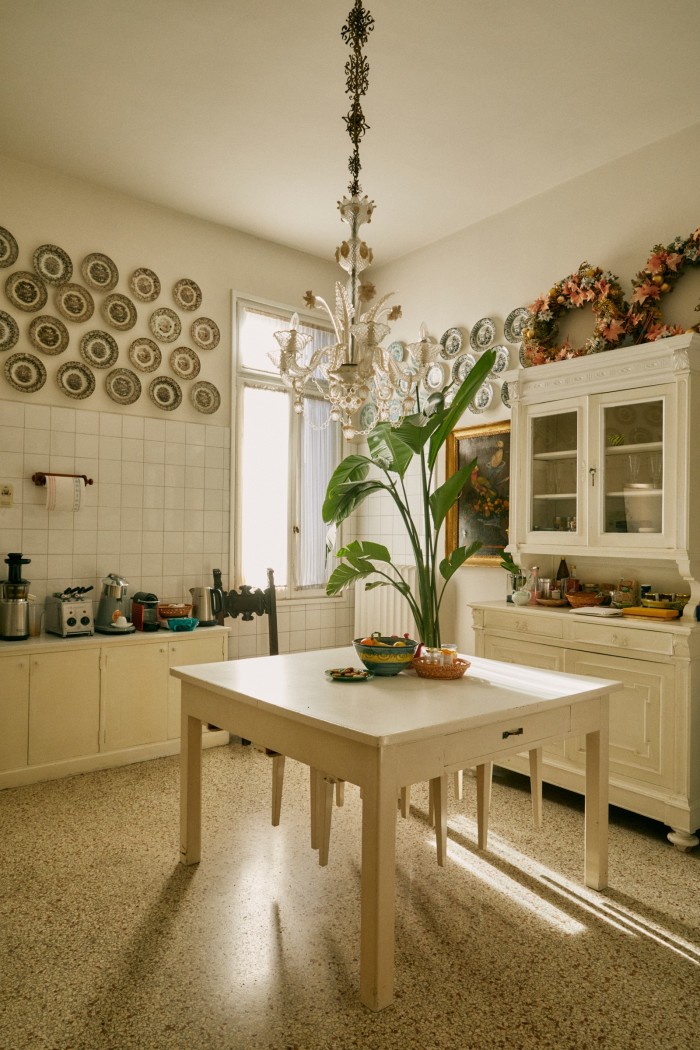
Upstairs on the fourth floor is a smaller, low-ceilinged living room referred to as “Nonna’s room”: two rattan sofas face each other over a dog bed (Cristiana’s three miniature dachshunds are rarely more than a room away from her); books and magazines are piled high on tables and chairs. Everywhere – framed and unframed, displayed on side tables or fireplace mantels or tucked into the corner of a mirror – are family photos.
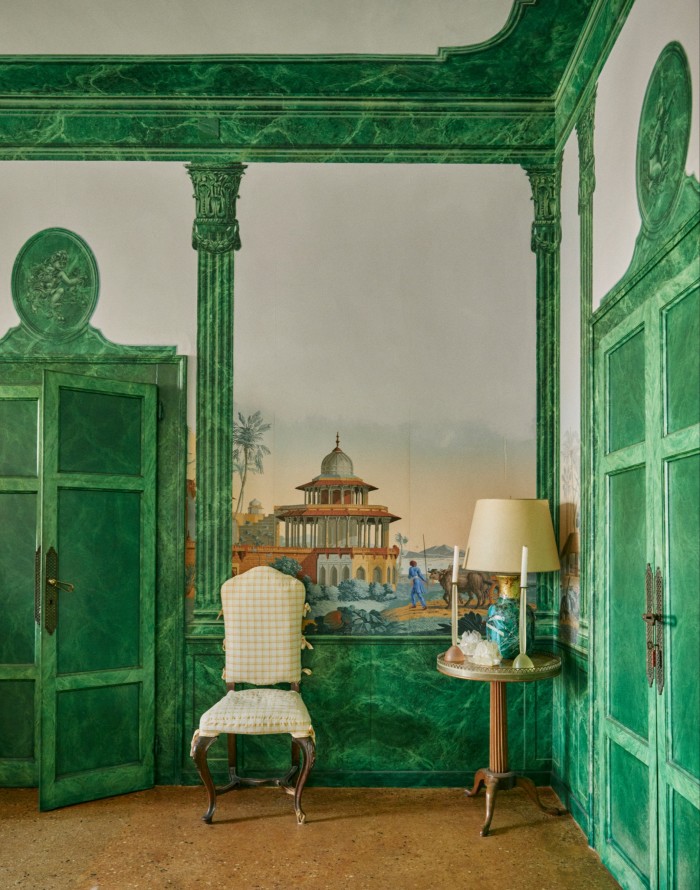


“She was my first grandchild, and in a way my first girl, given I had had four sons,” says Cristiana of Coco. “I perhaps had more time for her because of this.” The portraits are done, and the two of them are sitting hand in hand in the living room. Coco’s daughters, having gracefully exited the scene to eat pizzas for lunch, are upstairs. Cristiana is still wearing the cropped velvet jacket Coco had slipped over her shoulders in the dining room for her last photograph; the vivid turquoise beading picks up the blue of her simple jumper, and of her faded-denim eyes. The fashion gene passed directly down then, I propose to Cristiana. Not fashion, she corrects me firmly. “Il bello.” Beauty. Coco nods. “She was passionate about all the small things. Not every child would have been interested, but I was fascinated by her world. And the small artisans – she would always find the tiniest unknown one to make cushions, or her bedsheets. It’s because of her that I can look at bedsheets for hours.” Her laugh softens into a smile. “It’s because of her that I see beauty in the details.”
Go to @cocodadda to shop d’AddA and find out about upcoming trunk shows
Comments